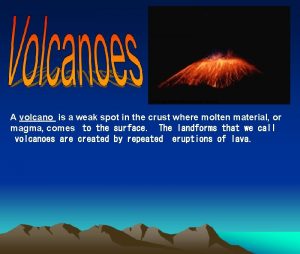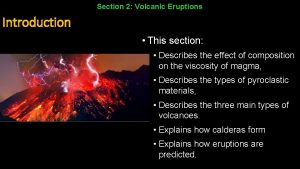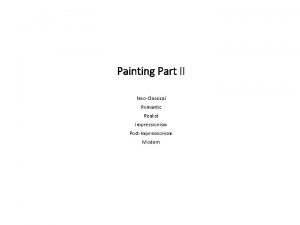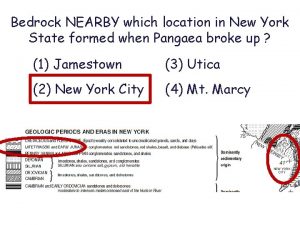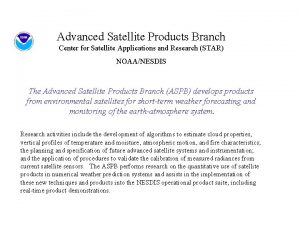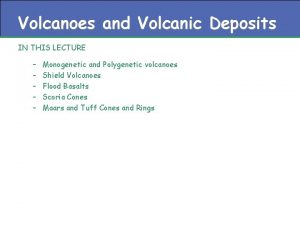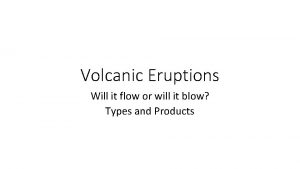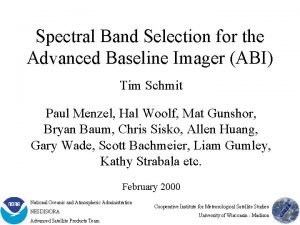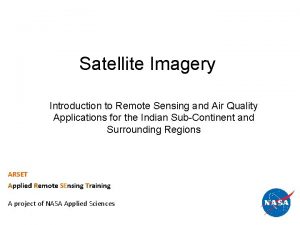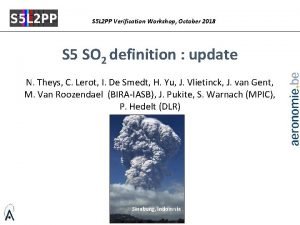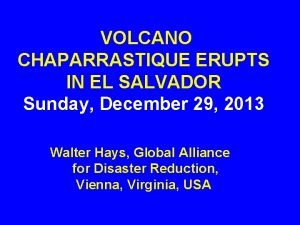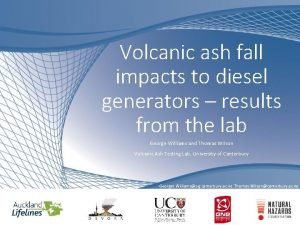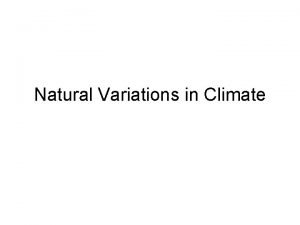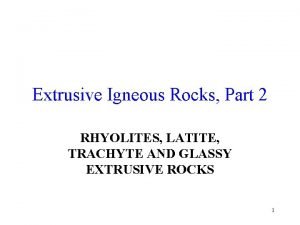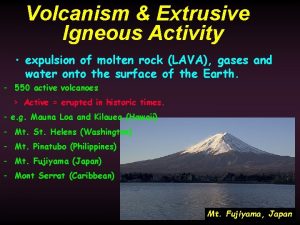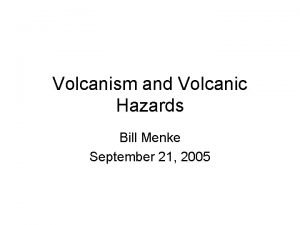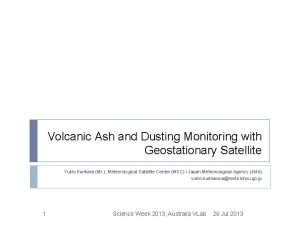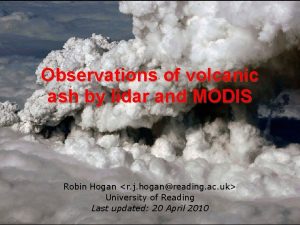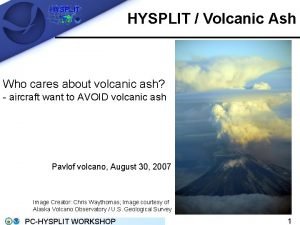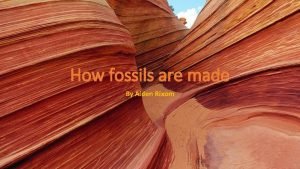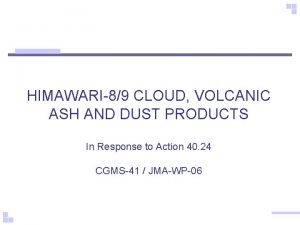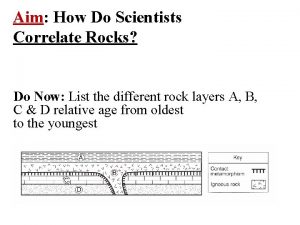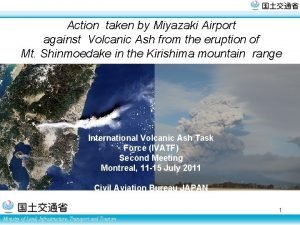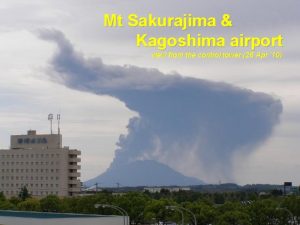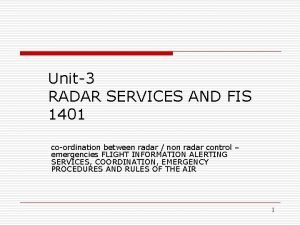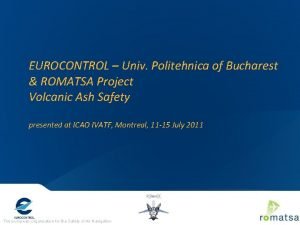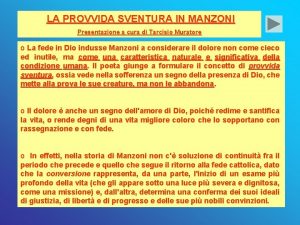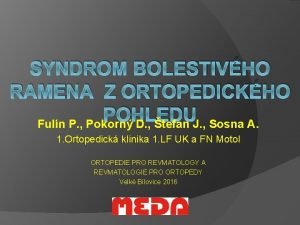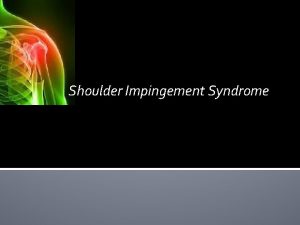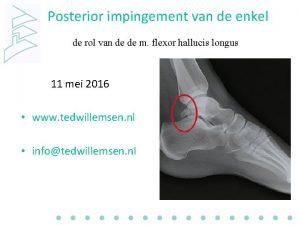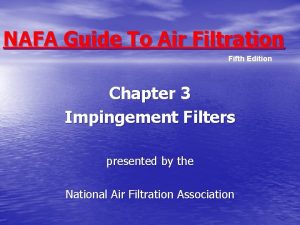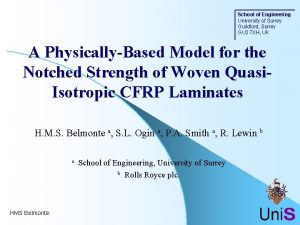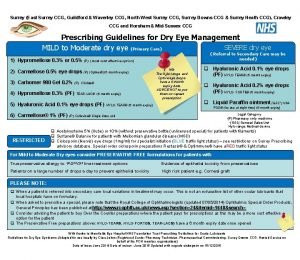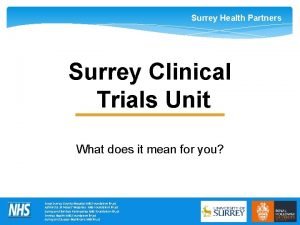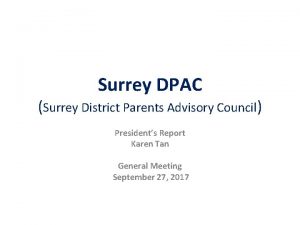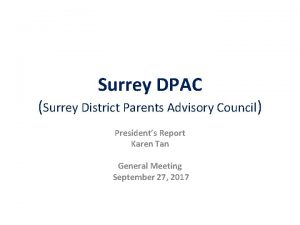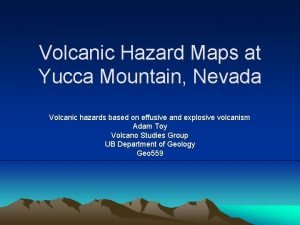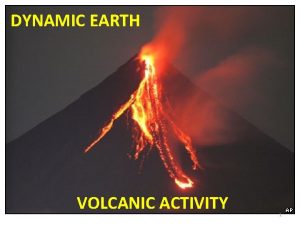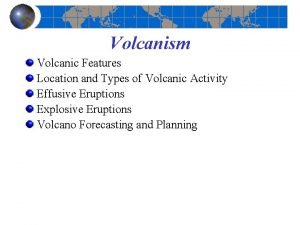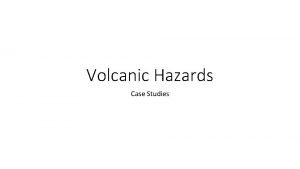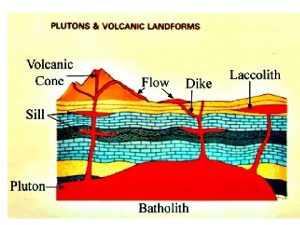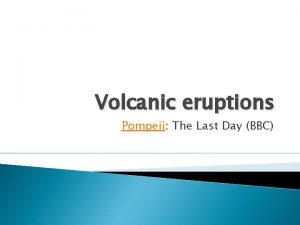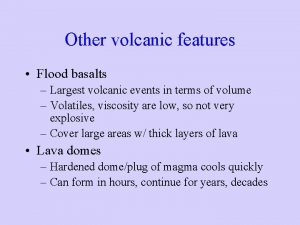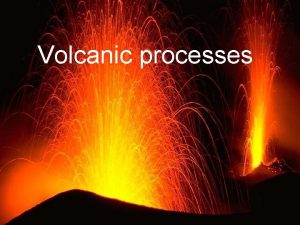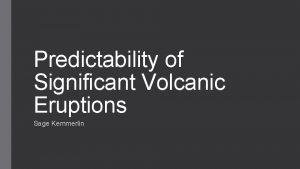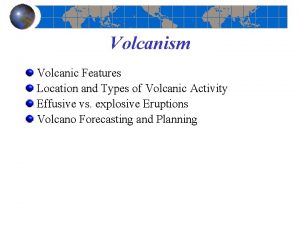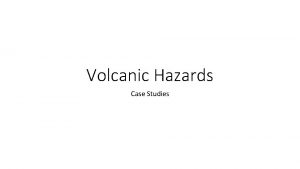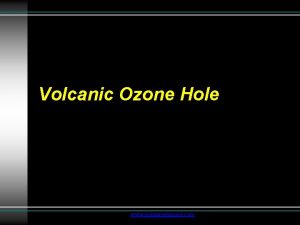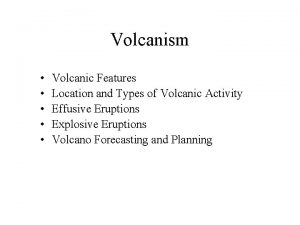Volcanic ash impingement PROVIDA University of Surrey Prof




































- Slides: 36

Volcanic ash impingement PROVIDA University of Surrey Prof. Sai Gu, Zihang Zhu 7/JUN/2016

Content • Recap of Previous work • Improvement of VA injection model • Modeling high viscosity droplet impact • Conclusion and Next step

Recap of previous work Modeling 2 D in-flight VA particle and phase transition Chamber environment Wall of tube PS gas inlet outlet

Recap of previous work Modeling 2 D in-flight VA particle and phase transition

Recap of previous work Modeling 2 D in-flight VA particle and phase transition

Recap of previous work Single particle impact (VOF) Viscosity 1 Pas (2 days)

Recap of previous work Single particle impact (CEL) Viscosity 1 Pas (~ 1 day)

Recap of previous work Temperature and composition dependent viscosity* 16 14 Laki Hekla Askja Eldgja log η (Pa s) 12 10 8 6 4 2 0 700 900 Temperature (°C) 1100 *Giordano D, Russell JK, & Dingwell DB. Silicate Melt Viscosity Calculator. 2008.

Recap of previous work Liquid spray/Nozzle test Water pump Atomizer Air cylinder 8000 10000 8000 6000 4000 2000 0 Statistics of Particle Diameter at 9 cm 0 -10 10 -20 20 -30 30 -40 40 -50 50 -60 60 -70 70 -80 80 -90 90 -100 Mean: 22. 814 μm 0 -10 10 -20 20 -30 30 -40 40 -50 50 -60 60 -70 70 -80 80 -90 90 -100 100 -110 110 -120 120 -130 130 -140 140 -150 150 -160 160 -170 180 -190 Statistics of Particle Diameter at 6 cm Mean: 22. 623 μm

Recap of previous work Liquid spray/Nozzle test Particle Mean Diameter vs Distance from nozzle exit 60 50 Diameter (μm) 40 Experimental Computational 30 20 10 0 0. 5 2 3 4 6 Distance from the nozzle exit (cm) 9 15

Recap of previous work Problems 1. The 3 D swirl effect of the VPS is not taken into consideration. This makes the temperature field only at the centre of the plasma jet matches the experiment data. 2. The CEL, VOF particle impact model is not suitable for the high-viscosity flow due to high demand of computational resources.

Improvement of VA injection model 3 D model

Improvement of VA injection model CFD vs Experiment data (Temperature)

Improvement of VA injection model CFD vs Experiment data (Velocity)

Improvement of VA injection model CFD vs Experiment data (Velocity with substrate)

Improvement of VA injection model DPM model

Improvement of VA injection model Striking rate and contact angle • • Large particles - Normal impact - Oblique impact ( small contact angle) Small particles - Bypass the substrate - Oblique impact (large contact angle)

Improvement of VA injection model Phase transition and in-flight particle heat transfer

Improvement of VA injection model Phase transition and in-flight particle heat transfer

Modeling high viscosity droplet impact Temperature and composition dependent viscosity* 16 14 Laki Hekla Askja Eldgja log η (Pa s) 12 10 8 6 4 2 0 700 900 Temperature (°C) 1100 *Giordano D, Russell JK, & Dingwell DB. Silicate Melt Viscosity Calculator. 2008.

Modeling high viscosity droplet impact Particle based SPH method (smoothed particle hydrodynamics) Eulerian Mesh (VOF) • High computational resource consumption Lagrangian Particles (SPH) • By using different discretization/ interpolation method, SPH is faster then traditional VOF method • Have stability issue

Modeling high viscosity droplet impact SPH method (algorithm - density) Any function A(r) could be represented by If it’s interpolated by particles of mass m and density ρ Where W is called the kernel function, h is the smoothed radius. For example, the density ρ at each particle could be represented by

Modeling high viscosity droplet impact SPH method (algorithm -EOM) There fore the N-S governing equation is then: The surface of the substrate is set with damping and elasticity.

Modeling high viscosity droplet impact SPH method (algorithm –heat transfer) The heat transfer equation could be represented: Where Ghost particles was generated to simulate only the heat transfer between the substrate and droplet. They will not have any influence on the equation of motion.

Modeling high viscosity droplet impact Density stability

Modeling high viscosity droplet impact Viscosity 1 Pas and no solidification

Modeling high viscosity droplet impact Heat transfer

Modeling high viscosity droplet impact Viscosity 1 Pas velocity 10 m/s normal impact Spreading Factor 1. 5

Modeling high viscosity droplet impact Viscosity 10 Pas velocity 10 m/s normal impact Spreading Factor 1. 1

Modeling high viscosity droplet impact Viscosity 50 Pas velocity 10 m/s normal impact Spreading Factor 1. 05

Modeling high viscosity droplet impact Viscosity 50 Pas velocity 20 m/s oblique impact (30°) Spreading Factor 1. 1

Modeling high viscosity droplet impact Viscosity 50 Pas velocity 20 m/s oblique impact (45°) Spreading Factor 1. 5

Modeling high viscosity droplet impact Viscosity 50 Pas velocity 20 m/s oblique impact (60°) Spreading Factor 1. 7

Modeling high viscosity droplet impact

Conclusion and Next step • Viscoelastic (VE) model could be more proper in case of simulating the particles. • The SPH EOM could be switched to SPH VE constitutive equations.

Thank you !
 Thin layers of volcanic ash act as excellent time markers
Thin layers of volcanic ash act as excellent time markers Volcanic ash
Volcanic ash Volcanic ash
Volcanic ash Volcanic ash
Volcanic ash Volcanic ash
Volcanic ash Volcanic ash
Volcanic ash Volcanic ash
Volcanic ash Volcanic ash
Volcanic ash Volcanic ash
Volcanic ash Volcanic ash
Volcanic ash Volcanic ash
Volcanic ash Volcanic ash
Volcanic ash Volcanic ash
Volcanic ash Volcanic ash
Volcanic ash Volcanic ash
Volcanic ash Rhyolite
Rhyolite Stratovolcano plate boundary
Stratovolcano plate boundary Volcanic ash
Volcanic ash Volcanic ash
Volcanic ash Volcanic ash
Volcanic ash Volcanic ash
Volcanic ash Volcanic ash
Volcanic ash Volcanic ash
Volcanic ash Volcanic ash
Volcanic ash Volcanic ash
Volcanic ash Index fossil
Index fossil Volcanic ash
Volcanic ash Volcanic ash
Volcanic ash Volcanic ash
Volcanic ash Sigmet volcanic ash
Sigmet volcanic ash Volcanic ash
Volcanic ash Provvida sventura e provvidenza
Provvida sventura e provvidenza Surrey sits
Surrey sits Tenodéza bicepsu
Tenodéza bicepsu Weighted pendulum stretch
Weighted pendulum stretch Metatarsus primus elevatus
Metatarsus primus elevatus Impingement filtration
Impingement filtration

